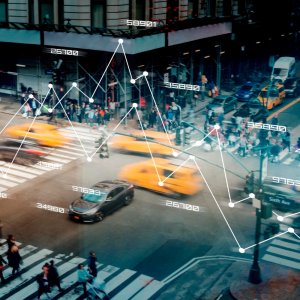Reducing ICT Carbon Impact

STORY INLINE POST
Global warming is a worldwide concern, and every individual, corporation and country should do their part to fight it. More than ever, we must make ourselves aware of the impact of our behavior and move toward low carbon and green operations. There are lots of global initiatives and agreements, such as those from COP26; regardless, it is important to highlight the initiatives of telecom operators and vendors to set aggressive goals in their operations to reach carbon neutrality.
On the one hand, information and communications technology (ICT) has proved to be an important ally for human beings. It allowed many of us to overcome the pandemic by taking advantage of e-commerce, home office, remote learning, entertainment, etc. On the other hand, we are consuming more and more energy because of the use of ICT, which represents 4 percent of global electricity use, according to the GSMA, or Global System for Mobile Communications. Fortunately, technology has evolved to help us in this endeavor, which is a nice paradox.
Telecom operators around the world are setting aggressive goals to reduce their carbon impacts, and vendors are investing in R&D to develop green-friendly technology to help. When deploying sites for mobile communications, we used to think in terms of central offices and shelters with large footprints and high demand for cooling and energy; nowadays, those facilities are being reduced to cabinets with a lower footprint and less cooling and energy requirements, and with additional communications capacity; for example, providing more and better communication (5G) with less energy. And technology is also allowing the move from cabinets to equipment in poles, reducing even more the need for energy.
That’s only one part of the overall answer. Reducing energy needs is not enough to overcome the challenge. Energy generation, distribution, storage and consumption are also taking advantage of ICT; instead of having independent, siloed systems for each of those phases with ICT, specifically cloud and AI, intelligent management systems are being developed to create watt streams and bit streams that work together. As an example, if a mobile central office lowers its traffic, the energy systems should reduce their levels in the same proportion. That’s possible today using AI systems that monitor the telecomm traffic and work accordingly on the power supply, creating a virtuous circle. ICT is also being used to improve efficiency of the systems, and again, AI is playing a paramount role in managing entire energy systems and improving the end-to-end efficiency, with important savings in cost, but more importantly making better use of the energy.
We are working on these two alternatives, lowering energy requirements by reducing equipment footprint, and dynamically adjusting the power supply of the on-site equipment based on actual demand.
Now let’s talk about generation. Solar power (PV, photovoltaic) is a great and cost-effective solution for Latin America, but it is poorly regulated; there is a lack of regulation related to technical specifications or product standards, or for having AutoDetect and shutdown mechanisms to make PV generation safe and reliable. Europe and China have made advances on the matter that the Latin American region might look to as a model.
PV energy generation is a very attractive alternative that should be promoted and encouraged with public policies by countries in the region. PV technology is needed for homes, campuses, factories, data centers, networks, hospitals, schools, parking sheds, office buildings/malls and warehousing/logistics, and then to realize zero carbon towns, cities, provinces and societies. It is predicted that the distributed system will account for more than 40 percent of the world's newly installed capacity by 2025. Tax incentives and subsidies may help this trend and encourage the deployment of this technology.
The other initiative taken by vendors is to build recycling systems for devices and related products. Collecting and processing e-waste has become paramount; as an example, last year Huawei collected and processed more than 4,500 tons of e-waste. Those are high-impact actions that can be taken in all industries.
As stated before, ICT can help a great deal in overcoming the big climate change challenge. Let’s use ICT, especially cloud and AI, to improve efficiencies, lower energy needs, and be able to enjoy our life on the planet by taking advantage of what ICT brings to us in our daily life.
























